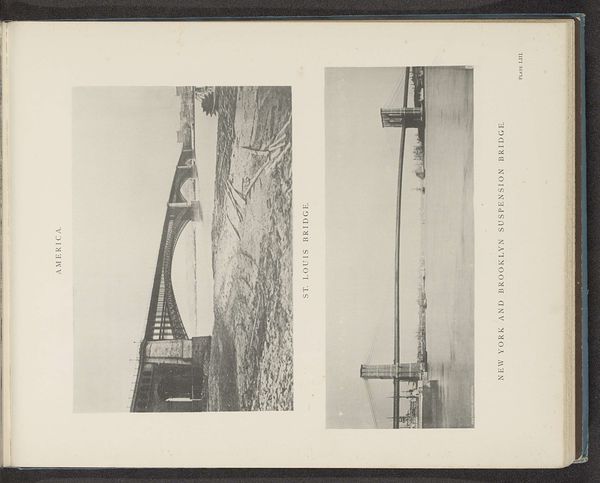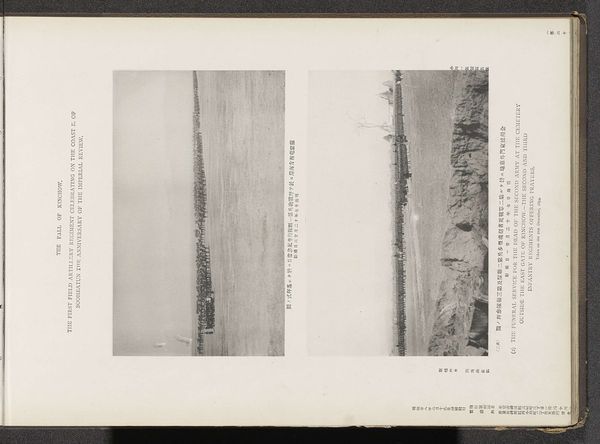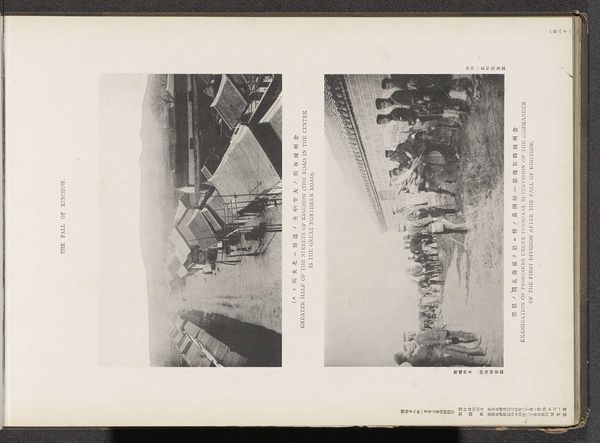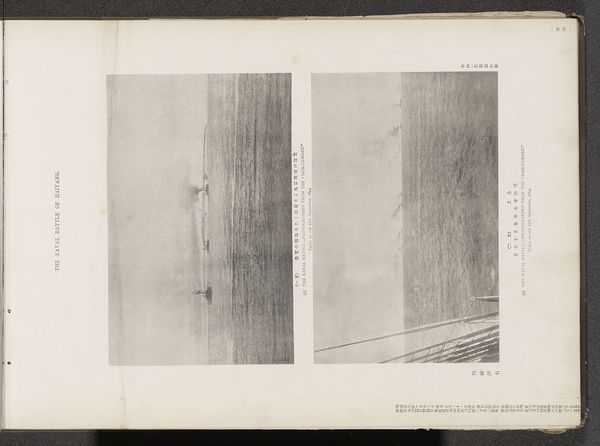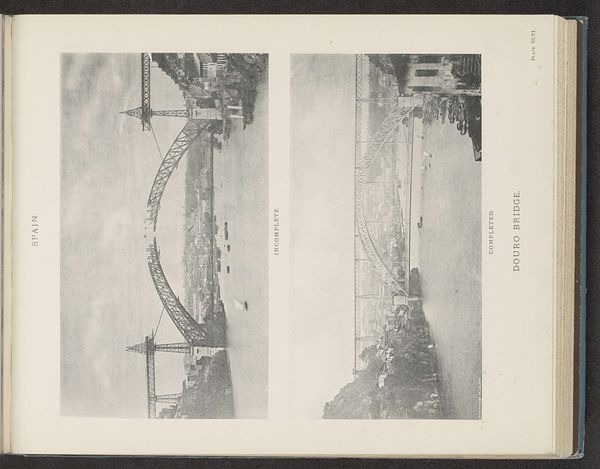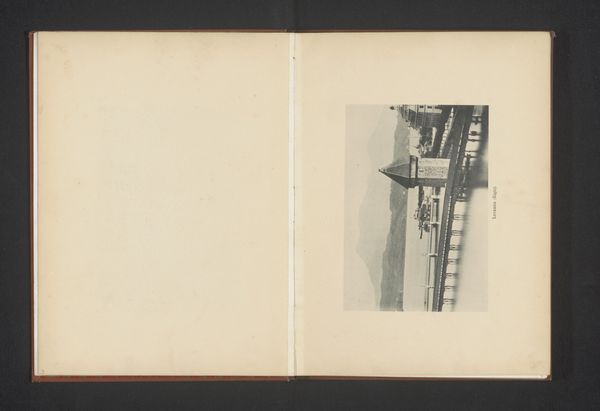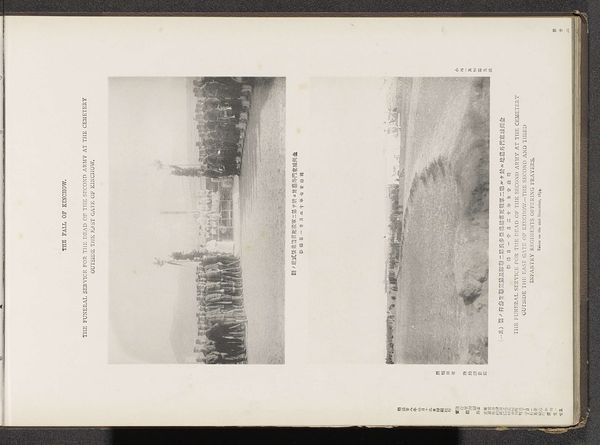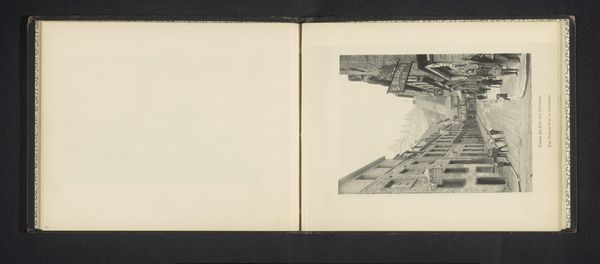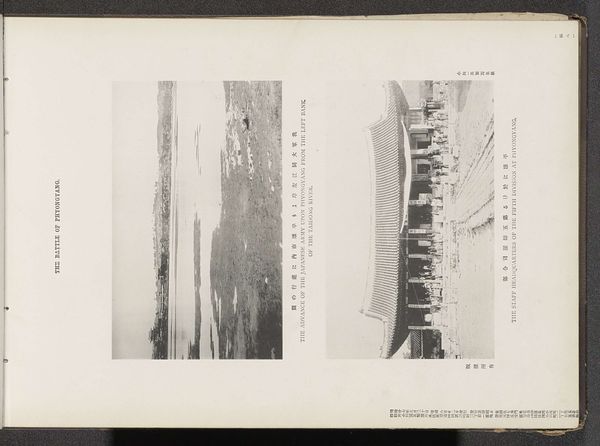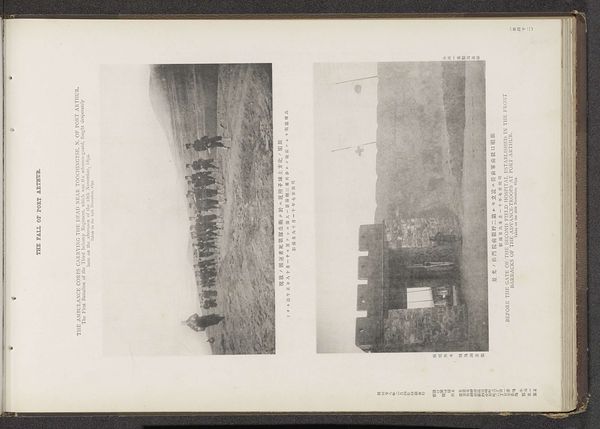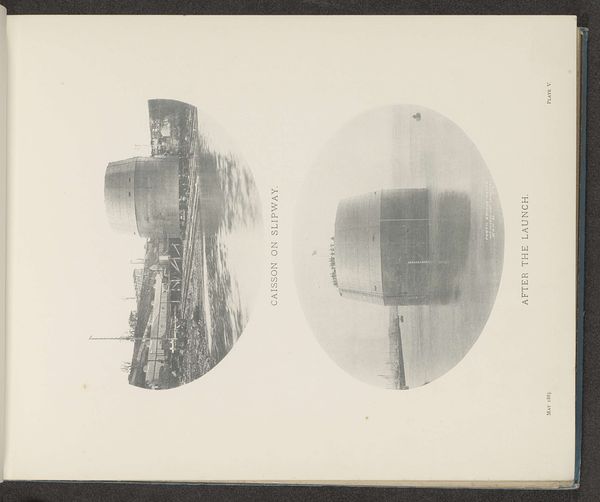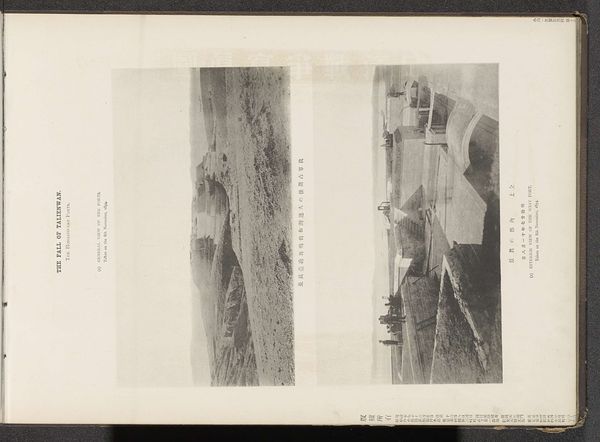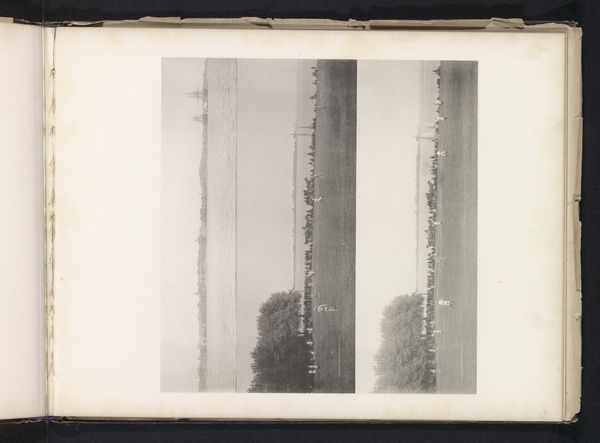
print, photography, gelatin-silver-print
# print
#
landscape
#
photography
#
orientalism
#
gelatin-silver-print
#
cityscape
Dimensions: height 426 mm, width 195 mm
Copyright: Rijks Museum: Open Domain
Editor: Here we have "Two Views of the Coast at Manchuria", a gelatin silver print, possibly from 1894, credited to the Ordnance Survey Office. What immediately strikes me is the contrasting industrial structure against the wilder landscape. How do you interpret the social context of these paired images? Curator: That's a key observation. These images, presented together, likely played a specific role in shaping perceptions of Manchuria at the time. The bridge symbolizes progress, modernity, and quite frankly, imperial ambitions extending into new territories. How do you think they intended this photograph to be received by the European audience? Editor: I suppose, they wanted to depict the landscape as open for expansion and exploitation, maybe? Like, showing off technological advancements alongside the "untouched" coastline makes it look like they are civilizing an otherwise "primitive" place. Curator: Precisely. It participates in a visual language that reinforced colonial power structures. Do you think it would have had that impact? Editor: Well, these views are being documented through a Western lens; photography itself was a relatively new medium then and a powerful tool for documentation and propaganda. Curator: Exactly! And institutions like the Ordnance Survey Office contributed to this by documenting and shaping how foreign lands were perceived. It also begs the question of whose stories are *not* being told. Whose perspectives are we missing in this carefully curated view of Manchuria? Editor: This makes me think about how the 'neutral' documentation of landscape through photography can mask an inherently biased, and often political, message. Curator: Right. We tend to associate photography with objectivity, but its institutional context, like the Survey Office here, complicates that notion, making this, at its core, Orientalist imagery. Editor: Thanks for making that connection so clear! Thinking about it, I'll certainly approach such images with a much more critical eye moving forward.
Comments
No comments
Be the first to comment and join the conversation on the ultimate creative platform.
